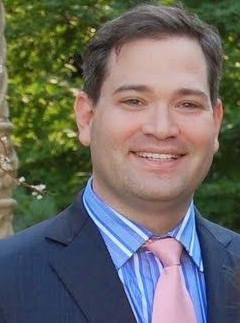
When patients struggle with depression, common first-line responses involve talk therapy and prescription medication. Yet, we know that one-third of patients are treatment resistant to several medication trials, and a lot of people are left without relief. As mental health professionals look to bridge the gap in serving the growing demand of patients with mental illness, investing in modern and advanced treatment devices is a key component to successful outcomes.
A Star*D study validated what we have seen in the field for years: There is a decreasing likelihood of remission for mental health patients after two failed medication trials. Two alternative, non-medication treatment options are often proposed by providers – but both pose notable challenges to most patients.
- Historically, the most effective treatment option for treatment-resistant depression (TRD) patients is electroconvulsive therapy (ECT). However, patients are sometimes hesitant to try ECT due to the stigma around “shock therapy,” the risk of adverse cognitive effects, and its limited availability. Not only is ECT invasive, requiring the use of anesthesia, it also can lead to short-term memory loss. Despite its effectiveness, ECT is used in less than 1% of patients with treatment resistant depression.
- Intravenous (IV) ketamine and intranasal esketamine also have demonstrated efficacy for TRD, but there is not yet sufficient evidence for maintenance treatments, they require anesthesia or nurse monitoring, and patients cannot drive home right after a treatment.
Both of these treatment options pose challenges for treatment-resistant patients, which is why I believe the future of psychiatry will involve the use of transcranial magnetic stimulation – or “TMS” – in every mental health facility.
TMS should be recommended sooner in the care continuum, so patients have the opportunity to consider the modern, advanced, and effective treatment as an option compared to the traditional methods currently offered. TMS, and the more advanced form called Deep Transcranial Magnetic Stimulation (Deep TMS), are noninvasive, well tolerated, do not require anesthesia or cause systemic side effects, are administered in a doctor’s office in less than 30 minutes, and are covered by most health insurance plans.
If you are not yet familiar with TMS as a treatment option for treatment resistant patients, it is time to start learning about it. TMS brings hope to millions of patients living with mental illness, with a growing number of patients speaking out about the promising results, demonstrating a shift in the mental health industry with this medical device technology.
TMS has been studied for decades. Scientist Anthony Barker used TMS in 1985 to perform the first motor cortex stimulation. Ten years later, Mark S. George, M.D. demonstrated the antidepressant effects of repetitive TMS (rTMS). After years of research and clinical studies, TMS was cleared by the FDA for treatment-resistant depression (TRD) in 2008.
TMS and Deep TMS™ are modern and advanced mental health treatment devices used by clinicians across the globe. The technology uses electromagnetic fields to stimulate neural activity of brain structures found to be associated with depression, specifically the bilateral prefrontal cortex and dorsolateral prefrontal cortex. By generating electromagnetic fields, TMS has been shown to create a more stable rhythm of activation within the targeted neural structures, thereby alleviating the frequency and severity of the patient’s presenting symptoms, facilitating relief, and improving their well-being.
A TMS treatment session typically lasts about 20 minutes, although some providers use a shorter theta burst three-minute protocol. The course of treatment is divided into an acute phase of five treatments per week for four weeks, followed by a continuation phase where the patient will undergo two sessions per week. The entire course of treatment usually occurs over a 12-week period.
The efficacy and safety of Deep TMS was demonstrated both as a standalone treatment and as an add on to psychotherapy or medications. Patients undergoing TMS treatment often report experiencing a noticeable improvement in their well-being within three to four weeks of the initial session.
Given the clinical and real-world data, both types of TMS should be considered after front-line options like medication and talk therapy methods fail. Patients should not have to continue trying endless medications without relief when there is an affordable, noninvasive method with proven safety and efficacy. TMS should be presented as a second line option for depression patients when front-line treatments fail.
It is time for the mental health industry to embrace modern and advanced technology to help treatment-resistant patients.
About Dr. Aron Tendler, M.D
Dr. Aron Tendler, M.D., is the chief medical officer of BrainsWay, a global leader in advanced noninvasive neurostimulation treatments for mental health disorders. BrainsWay is boldly advancing neuroscience with its proprietary Deep Transcranial Magnetic Stimulation (Deep TMS™) platform technology to improve health and transform lives.

